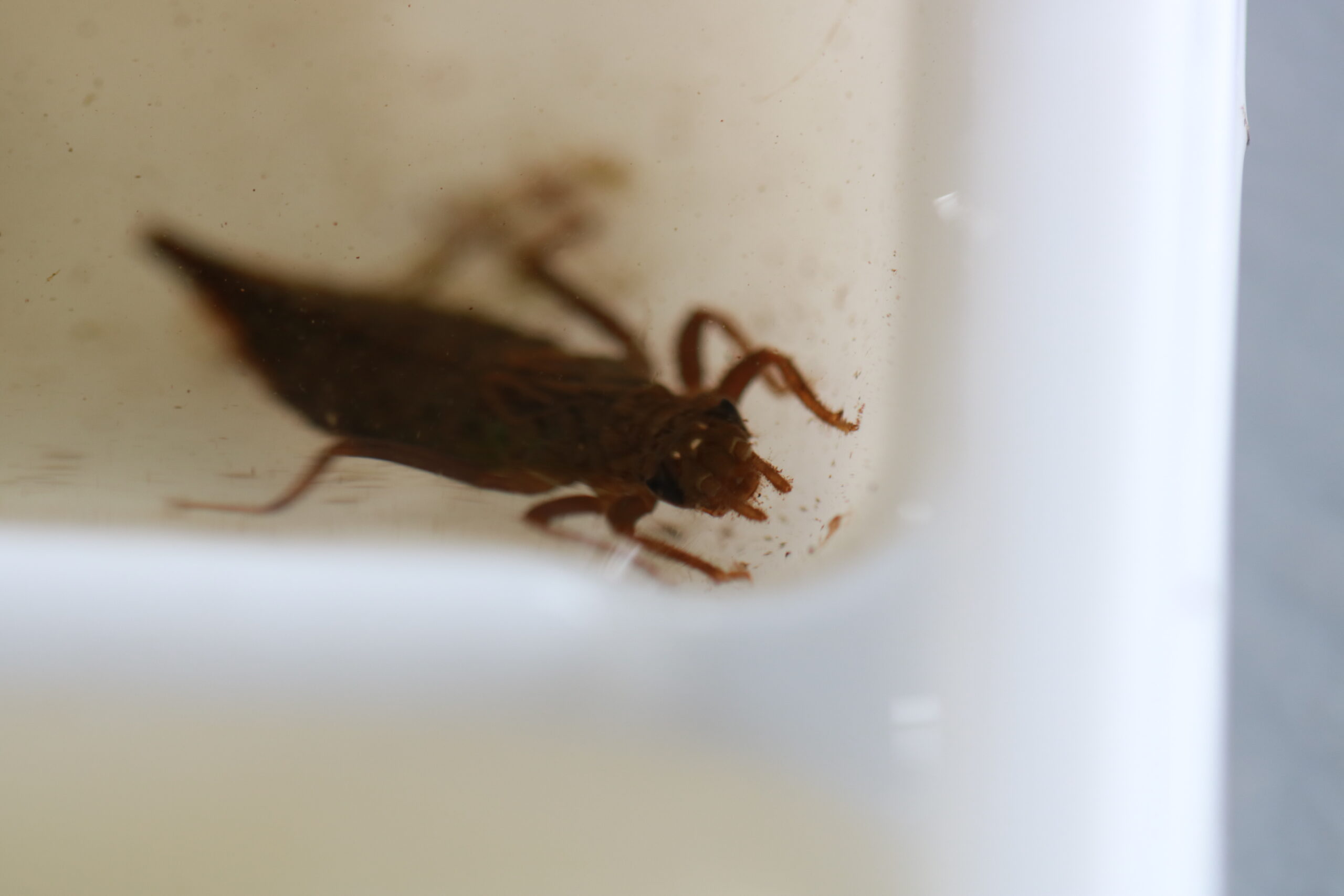
The DMP team after sampling on Rock Springs Run.
2020 presented new challenges on how to collect the required 10-15 dragonfly nymphs from each of the four designated sites within the Wekiva Basin. This was the 2nd year for samples to be submitted for analysis from the Wekiva Wild & Scenic River System. The Dragonfly Mercury Project is organized by the National Park Service and sample analysis is done by USGS.
This year the sample sites were Camp Joy on Rock Springs Run, Lake Prevatt in Wekiwa Springs State Park, Katie’s Landing on the Lower Wekiva River, and Lake Norris from the launch site inside the Lake Norris Conservation Area.
At each site community scientists armed with nets wade into the water and begin to pull up silt, sand, decaying vegetative matter and, hopefully, dragonfly nymphs. Then the hard part starts! Volunteers begin to carefully sort through the contents of their nets looking for dragonfly nymphs. The nymphs that will end up being shipped to USGS for analysis must be at least 10mm in length (not including legs!). During this process we often come across a variety of species in our nets like water scorpions, water beetles, alligator fleas, and even turtles!
When at least ten dragonfly nymphs have been caught, they are carefully measured, identified to family, and bagged. To reduce the risk of contaminating the samples, volunteers use gloves, plastic spoons and forceps to handle the nymphs prior to placing them in the bags. Once all the data about the site and samples is recorded and samples are bagged, they are stored in a freezer until all the sites are completed. Once completed, samples are shipped to USGS labs for final analysis.
Community scientists are the backbone of this project and we couldn’t do it without you! Thank you to all of our volunteers that have helped on this project. We look forward to the 2021 DMP season. Stay up to date by following us on Facebook and Instagram @WekivaWildandScenic and check for updates on our Events page.

Bagged dragonfly nymphs with volunteer dip-netting in the background

Gina DelPizzo with a turtle that she caught.

